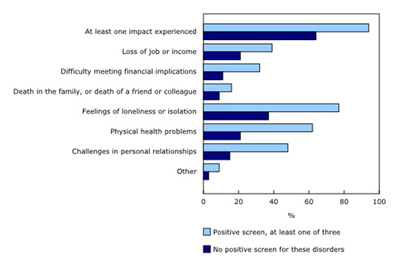March GDP: Flash Estimate Shows 9% Decline

April 15, 2020
The gross domestic product (GDP) is a core economic measure of the health of the Canadian economy. Typically, Statistics Canada releases these data about two months after the end of the reference period. The most recent monthly release, for instance, highlighted GDP for the January reference month.
Given the unique situation faced by the Canadian economy in the context of the COVID-19 pandemic and the demand for trusted information on the aggregate impact of this health crisis on the economy, Statistics Canada has produced a flash estimate of monthly GDP for March. This measure is an approximation of the scale of economic disruption resulting from the deliberate actions taken to protect the health of Canadian citizens.
Normally, Statistics Canada uses a complete set of survey and administrative data when compiling monthly GDP. Estimates for the March reference month would be based on actual data for that same reference month from source programs across the agency that cover all industries. Under these exceptional circumstances, these same programs have made use of all of the information they have at hand to produce this special flash monthly GDP.
These estimates should not be expected to have the same quality as Statistics Canada’s official estimates of GDP and should be seen as a tool to inform users of the change in GDP. These estimates will change once more actual data is used in the compilation of these estimates in May.
The flash estimate for GDP indicates a decline of approximately 9% in March. Even though the basis of calculation is different, in a relative sense, this would be the largest one-month decline in GDP, since the series started in 1961. Overall for the quarter, this flash estimate of GDP leads to an approximate decline of 2.6% for the first quarter of 2020.
Economic disruptions have been both deep and widespread in the month of March. Among the hardest hit by social distancing measures and government restrictions have been the travel- and tourism-related industries, such as personal transportation, restaurants and accommodation. Major declines have also occurred in personal services, retailing (other than food), entertainment and sporting events, and movie exhibition. Working from home and distance learning have been growing trends across society, however, due to the suddenness and breadth of the shutdowns of government and education facilities, the volume of output in these sectors, based on actual hours worked, is calculated to decline dramatically.
Not all sectors of the economy declined in March. Activity in the health sector, food distribution and online retailing and streaming have been growing. Despite the collapse in oil prices and the pullback in the sector’s investment activities, early indications seem to show that the volume of oil and gas extraction and pipeline transportation had not yet been substantially impacted in March as storage facilities were still being filled.
Source: Statistics Canada, https://www150.statcan.gc.ca/n1/daily-quotidien/200415/dq200415a-eng.htm?CMP=mstatcan
Photo by Kelly Sikkema on Unsplash











